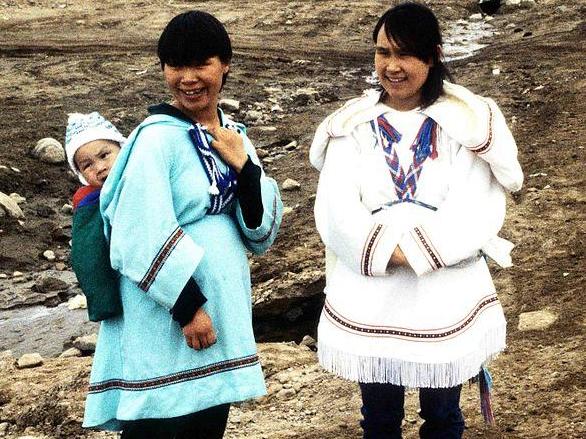Inuit population in Canadian Arctic has unique genome adapted for extreme cold, study finds
People in Nunavik have distinct genome adapted to living in extreme cold

Your support helps us to tell the story
From reproductive rights to climate change to Big Tech, The Independent is on the ground when the story is developing. Whether it's investigating the financials of Elon Musk's pro-Trump PAC or producing our latest documentary, 'The A Word', which shines a light on the American women fighting for reproductive rights, we know how important it is to parse out the facts from the messaging.
At such a critical moment in US history, we need reporters on the ground. Your donation allows us to keep sending journalists to speak to both sides of the story.
The Independent is trusted by Americans across the entire political spectrum. And unlike many other quality news outlets, we choose not to lock Americans out of our reporting and analysis with paywalls. We believe quality journalism should be available to everyone, paid for by those who can afford it.
Your support makes all the difference.Inuit living in the Canadian Arctic are genetically distinct from any known group, according to new research.
Living in geographical isolation for thousands of years has meant the Nunavik Inuit – a founder population of Canadian Arctic indigenous people – has developed a distinct genome adapted to living in extreme cold on a high-fat diet.
Their closest relatives are the Paleo-Eskimos which lived in the Arctic in complete isolation for more than 4,000 years before dying out 700 years ago, according to the paper published in the Proceedings of the National Academy of Sciences of the United States of America journal.
Judging from their genome, Nunavik Inuit ancestors came from Europe around 11,000 years ago, splitting from the Greenlandic Inuit around 10,500 years before the present.
Dr Patrick Dion from the Montreal Neurological Institute told The Independent: “Over thousands of years this population migrated west to east in Canada to where they are located now and then slowly there’s been a genetic drift and they’ve not mixed much with surrounding populations.”
He added: “They have variants in their genome that you will not find in any other populations. Some of those variants are very beneficial for adapting to their lifestyle in the north. However, it also means they could be more at risk from certain diseases if they develop western diets and lifestyles.”
One example is their predisposition for having high levels of cardiovascular disorders and a propensity to having brain aneurysms. Aneurysms occur when the wall of an artery in the brain weakens and can rupture, causing a potentially fatal haemorrhage.
Until now, the genetic background of this population, which is made up of around 3,000 individuals, was badly understood as they live far from scientific research centres.
Scientists from The Neuro (Montreal Neurological Institute and Hospital) of McGill University analysed the genetic characteristics of 170 Inuit volunteers from Nunavik, a region of northern Quebec.
Dr Dion said: “It was already known they were more at risk but now we have a genetic explanation.”
Until 100 years ago the Nunavik population had not mixed outside their group for thousands of years. Now between 10 to 15 per cent of the population have genes from elsewhere.
Isolated non-European populations living in remote parts of the world are often underrepresented or completely absent from genetic studies and understanding their genetic makeup will help medical experts deliver better services for them.
Dr Guy Rouleau from McGill University, the study’s senior author said: “In the case of the Nunavik Inuit, our results emphasise the need to provide effective neurological services. Future research will build on the findings to determine if these unique genetic traits increase risk of aneurysm, and if so, what interventions can be designed to reduce this risk”.
The study was done with approval from Nunavik Nutrition and Health Committee in Kuujjuaq, Nunavik.
Join our commenting forum
Join thought-provoking conversations, follow other Independent readers and see their replies
Comments